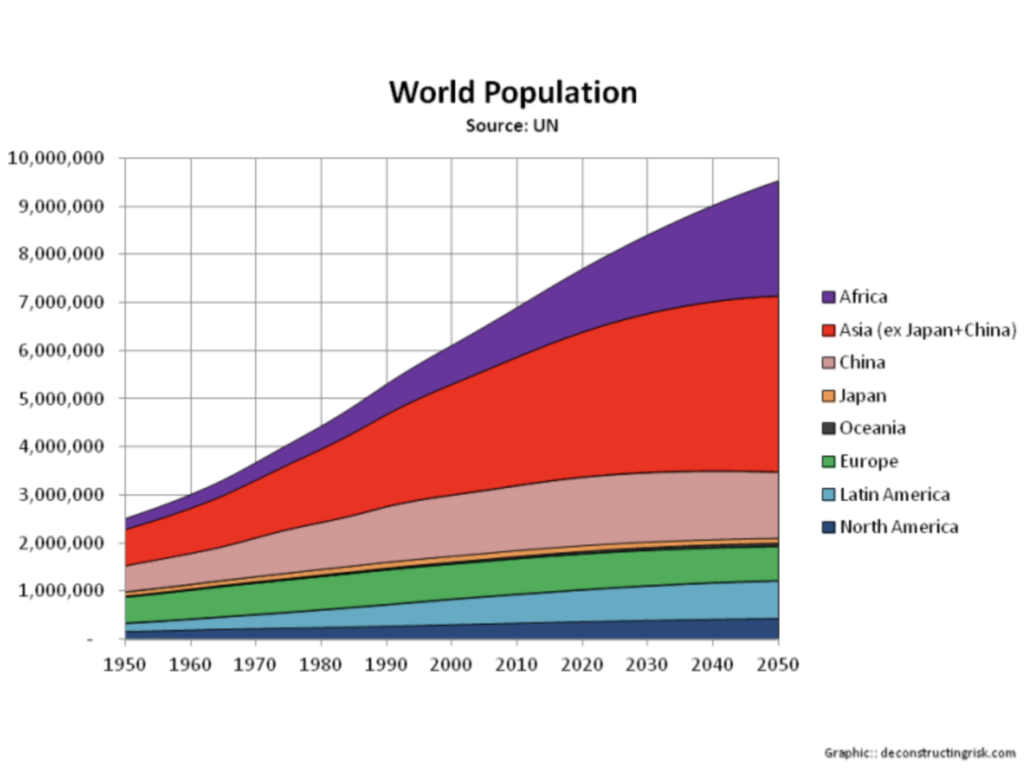This article will be featured along with other articles addressing agriculture investment opportunities and surrounding themes in the GAI Gazette, Volume 6, Issue 4, which will be distributed in conjunction with the annual Global AgInvesting Europe event, to be held in London on 9-10 December 2019.
Join us in London to hear valuable insight and best practices from the expert speaking faculty, which includes the author below, Dr. David Hughes, Emeritus Professor of Food Marketing, Imperial College London, who will present “Consumer-Driven Megatrends and Their Implications on Agricultural Investment” on the first day of the event. Learn more and register.
By Dr. David Hughes & Miguel Flavián
Watch out, food industry pundits are about holding forth on key trends affecting your business in 2019. Blink and 2019 is gone and we’re into a new decade. So here, we focus on what the global and local food industry scene might look like in 2030 – it’s closer than you think!
Good news to start with – the global population will have grown from 7.7 billion now to 8.5 billion by 2030; 800 million extra mouths to feed is both a challenge and a huge opportunity. Half of the population increase will come from Africa, and most will stay there if economic growth advances at a decent clip. However, if the African continent slips into the economic doldrums with slow growth and economic gains garnered only by a favored few, then, unhappy citizens will walk and most will head North, which could create a real immigration crisis in Europe! Much of the other half of the global population increase will be in Asia, not least the Indian sub-continent and Indonesia. Rapidly growing Asian countries are experiencing transformed diets benefitting particularly chicken, egg, fish, and dairy businesses, as well as soy producers (largely in South America and the U.S.). Intensive insect producers will be well-established by 2030, competing with soy to supplement accelerated livestock feed supply.

A Vision of the UK....MUCH MORE
What about the UK? We’ll add three million to our population over the next 10 years or so (from 67 million to 70 million) and that’s way better than in Japan, Russia, and Germany where numbers will decrease. Like many countries, the UK is aging fast – in 2018, 18 percent of us were 65 or older, and by 2030 it will be 28 percent. So what? Older folk eat less and, increasingly, are concerned about their health. If you’re over 60, stand on a chair and look out. What you can see is THE END and you’re bound and determined to push THE END out a bit further by improving your diet! In 10 years, most of us, irrespective of age, will be significantly more conscious of what we eat and its impact on our health. We’ll have a much better notion of our food goals, for example:
– if we aspire to be fit, toned, with an active lifestyle, then, food that is good for muscle-building, improving performance, and providing quick energy will appeal;– or if wishing to retain (even improve) our looks, then, food and drinks that are good for the skin, assist weight control, and are anti-aging will be sought;– or, maybe, we wish to be more zen, less stressed, with improved sleep quality and more balance in our lives, then a better digestive health diet might fit the bill;– and for those with specific health problems, foods with known disease prevention/repair attributes, heart healthy, and allergen-free qualities might appeal.
By 2030, we’ll embrace technology much more than at present to assist us in food and drink selection. It’s happening right now – e.g. Professor Toumazou from Imperial College London has developed a cool DNA Nudge “machine/App” whereby you swab saliva from your mouth, pop it into his magic machine and, then, when shopping, zap the ingredient list of the food product you fancy and the DNA Nudge will advise you whether it is a good or bad purchase given your dietary proclivities.
In many countries, not least the UK, health systems will be under huge pressure because of the aging population, and two major diseases – heart health and Type 2 diabetes. Governments will have long moved on from simply recommending that we should moderate our diets and, as they are doing now for sugar, will wade in with hefty taxes on food and drink products high in sugar, salt, fat, and alcohol. Cannabis and hemp food and drink products will be closely regulated but pervasive for social and medical usage.
Incidentally, in early January 2019, world stock markets were reverberating because of concerns about slowing economic growth in China. Well, pardon the pun, here’s another Sino-wrinkle, by 2030 China’s population profile will be very similar to that of Japan’s in 2018, i.e. more old folks than young ones as a result of decades of the one child policy in China (now rescinded). In fact, China will get old before it gets “Western” rich and will have all the consequential labor, social, and health problems associated with such. AI and robotics may ease the pain of labor shortages and care of the elderly, but the years of China driving global economic growth are numbered....